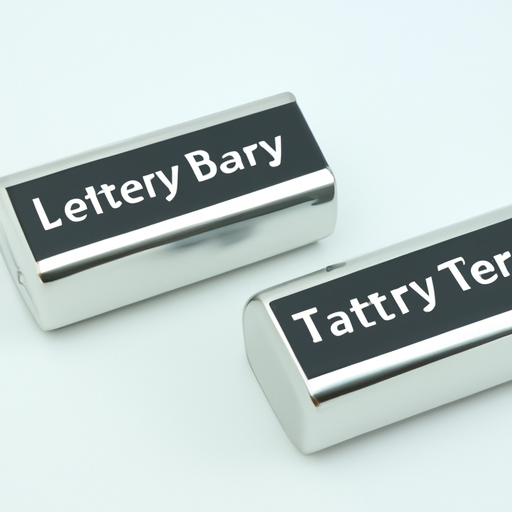Ternary lithium batteries, also known as lithium-ion batteries, are a type of rechargeable battery that has gained popularity in recent years due to their high energy density, long cycle life, and relatively low cost. These batteries are commonly used in a wide range of applications, including electric vehicles, portable electronics, and grid energy storage systems.

The anode of a ternary lithium battery is usually made of graphite, which is a common material used in lithium-ion batteries due to its ability to store and release lithium ions efficiently. The electrolyte is a liquid or gel substance that allows for the flow of lithium ions between the cathode and anode during charging and discharging.
One of the key advantages of ternary lithium batteries is their high energy density, which allows them to store a large amount of energy in a relatively small and lightweight package. This makes them ideal for use in electric vehicles, where weight and space are critical factors. Additionally, ternary lithium batteries have a long cycle life, meaning they can be charged and discharged thousands of times without significant degradation in performance.
Another important feature of ternary lithium batteries is their relatively low cost compared to other types of lithium-ion batteries. This is due in part to the use of nickel, cobalt, and manganese in the cathode, which are more abundant and less expensive than other materials commonly used in lithium-ion batteries.
In addition to their high energy density and long cycle life, ternary lithium batteries also offer fast charging capabilities. This is important for applications where quick charging times are essential, such as electric vehicles or portable electronics.
Despite their many advantages, ternary lithium batteries do have some limitations. One of the main challenges is the potential for thermal runaway, which can occur if the battery is damaged or exposed to high temperatures. This can lead to overheating, fires, and even explosions. To mitigate this risk, manufacturers have developed safety features such as thermal management systems and battery management systems to monitor and control the temperature of the battery.
Overall, ternary lithium batteries are a promising technology that offers high energy density, long cycle life, and fast charging capabilities at a relatively low cost. As research and development in this field continue to advance, we can expect to see even more improvements in performance and safety, making ternary lithium batteries an increasingly attractive option for a wide range of applications.
Ternary lithium batteries, also known as lithium-ion batteries, are a type of rechargeable battery that has gained popularity in recent years due to their high energy density, long cycle life, and relatively low cost. These batteries are commonly used in a wide range of applications, including electric vehicles, portable electronics, and grid energy storage systems.

The anode of a ternary lithium battery is usually made of graphite, which is a common material used in lithium-ion batteries due to its ability to store and release lithium ions efficiently. The electrolyte is a liquid or gel substance that allows for the flow of lithium ions between the cathode and anode during charging and discharging.
One of the key advantages of ternary lithium batteries is their high energy density, which allows them to store a large amount of energy in a relatively small and lightweight package. This makes them ideal for use in electric vehicles, where weight and space are critical factors. Additionally, ternary lithium batteries have a long cycle life, meaning they can be charged and discharged thousands of times without significant degradation in performance.
Another important feature of ternary lithium batteries is their relatively low cost compared to other types of lithium-ion batteries. This is due in part to the use of nickel, cobalt, and manganese in the cathode, which are more abundant and less expensive than other materials commonly used in lithium-ion batteries.
In addition to their high energy density and long cycle life, ternary lithium batteries also offer fast charging capabilities. This is important for applications where quick charging times are essential, such as electric vehicles or portable electronics.
Despite their many advantages, ternary lithium batteries do have some limitations. One of the main challenges is the potential for thermal runaway, which can occur if the battery is damaged or exposed to high temperatures. This can lead to overheating, fires, and even explosions. To mitigate this risk, manufacturers have developed safety features such as thermal management systems and battery management systems to monitor and control the temperature of the battery.
Overall, ternary lithium batteries are a promising technology that offers high energy density, long cycle life, and fast charging capabilities at a relatively low cost. As research and development in this field continue to advance, we can expect to see even more improvements in performance and safety, making ternary lithium batteries an increasingly attractive option for a wide range of applications.